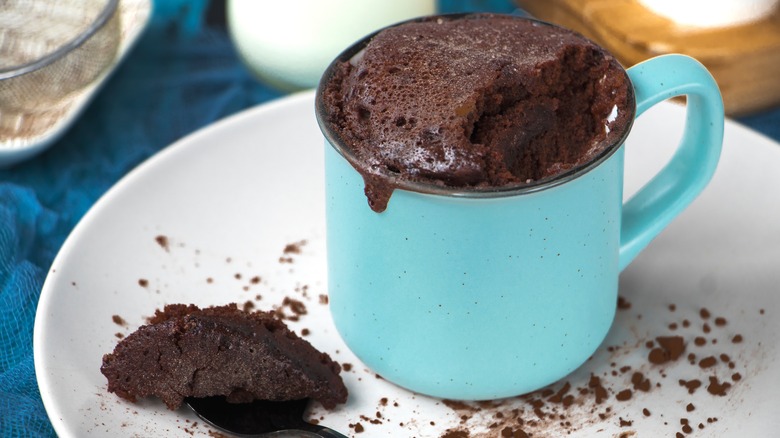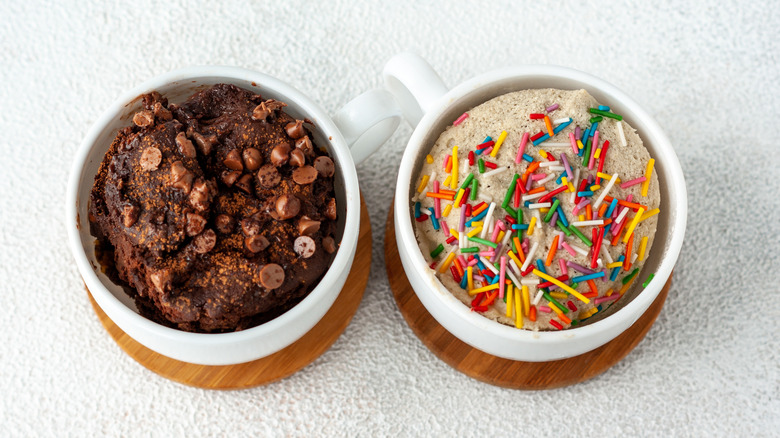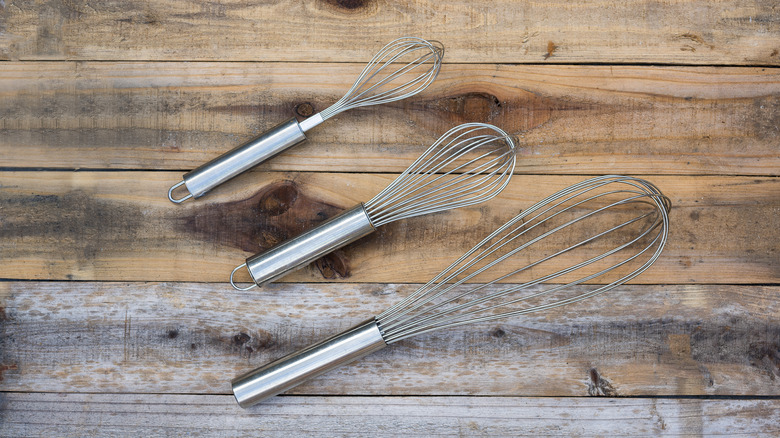The Biggest Mistake You Can Make With Mug Cakes
A mug cake may seem simple enough to make, with fewer ingredients and smaller quantities than a traditional cake — so less room for mistakes, right? Well, not quite. The small size of the treat, particularly the mug you make it in, may limit your ability to properly mix your ingredients together. A regular whisk, for instance, is too big to reach into the space where the wall meets the base, so you might end up with clumps of unmixed dry ingredients at the bottom.
Fortunately, there's an easy fix to this clumpy conundrum, and it's as simple as swapping out your full-size whisk for a mini version. As you can imagine, a mini whisk is much more effective for mixing ingredients in a small dish (such as a mug), being that its smaller loops can reach where larger whisk loops can't. And no more powdery surprises trapped in the bottom of your mug cake sounds like a huge win.
Don't overfill your mug with ingredients
Even with the perfect mini whisk, things can still go wrong when making a mug cake. One big mistake involves overfilling the mug. Just like with any other baked good, mug cakes rise during the cooking process. So, if you fill it past two-thirds of the way full, you're more likely to have a messy overflow situation in the microwave. Overfilling might also affect how well the cake cooks through, as more batter means a longer bake time, which your recipe might not have accounted for.
Of course, another issue with overfilling your mug is that it also hinders your ability to mix the ingredients. Sure, a mini whisk will mix your mug cake batter more easily, but you'll still have to deal with batter being displaced over the rim. So save yourself the mess by allowing more space. This will also help you with following the order of operations for combining wet and dry ingredients for the batter, ensuring you have room to evenly distribute them throughout.
Not all mini whisks are created equal
Now that we've established you need mini tools for small-batch baking (and mug-cake mixing), it's time to get into the nitty gritty details. After all, just like its full-size brethren, the mini whisk comes in a number of varieties, and not all of them are best suited to your needs.
When it comes to the loops of the mini whisk, the ideal shape for efficiency is broader rather than narrower. Wider-set loops also allow ingredients to more easily pass through without flying out over the mug's rim and making a big mess. On a similar note, you might see better results from a mini whisk that has more loops as opposed to fewer. In other words, the more you have, the more surface area there is for mixing, so five loops are better than just three.
You should also consider the material the whisk is made of: Thin wires or silicone may not be able to withstand a mug cake's batter, so the best of both worlds is a metal whisk with silicone coating. Not only is it stronger, but the silicone makes it safe for all dishes.



